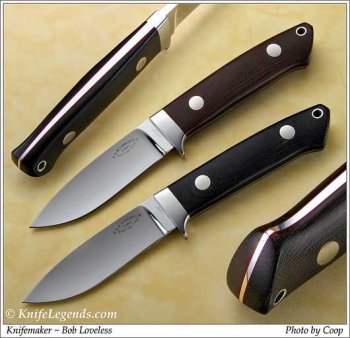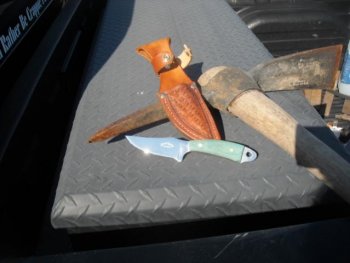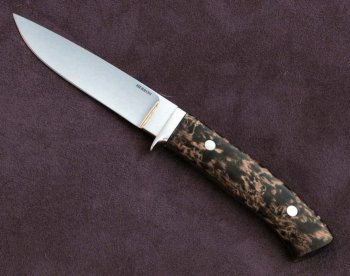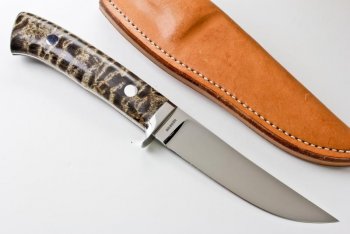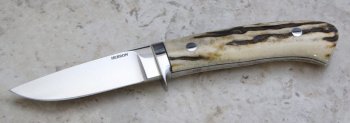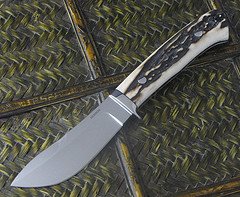Travis Fry
Well-Known Member
Let's talk about it. Size, materials, size, guard, grind type, steel type, size (a theme?). For the sake of discussion, let's keep "skinners" as a separate category for another day.
My $.02: A hunter can be stainless or carbon (I prefer carbon, but only by a little and am not a snob about it), at least 1/8" thick, but not more than 1/4". A guard can be nice but is not required, though I like some kind of finger groove at the front if there is no guard. To me a hunter is something at least 6 inches long in total, but less than 8 1/2" or so. The handle should be long enough to hold onto with all of your fingers, even if you have big hands, so that limits blade lengths to be 1) proportional and 2) short enough to not exceed the OAL suggested above. Blade can be clipped, drop point, or trailing, whatever. I prefer drop points. Grind should be flat or hollow. I prefer flat. Handle can be stick tang or full, and materials can be pretty much anything as long as proper care of things like ivory is taken. Micarta and the various phenolics are hard to beat for durability, but who doesn't like mammoth?
These are my opinions only, and I'd not be posting this if they weren't malleable. Let me hear what the Dogs think! I'm asking because I want to make better hunters, and I want to understand people's expectations.
My $.02: A hunter can be stainless or carbon (I prefer carbon, but only by a little and am not a snob about it), at least 1/8" thick, but not more than 1/4". A guard can be nice but is not required, though I like some kind of finger groove at the front if there is no guard. To me a hunter is something at least 6 inches long in total, but less than 8 1/2" or so. The handle should be long enough to hold onto with all of your fingers, even if you have big hands, so that limits blade lengths to be 1) proportional and 2) short enough to not exceed the OAL suggested above. Blade can be clipped, drop point, or trailing, whatever. I prefer drop points. Grind should be flat or hollow. I prefer flat. Handle can be stick tang or full, and materials can be pretty much anything as long as proper care of things like ivory is taken. Micarta and the various phenolics are hard to beat for durability, but who doesn't like mammoth?
These are my opinions only, and I'd not be posting this if they weren't malleable. Let me hear what the Dogs think! I'm asking because I want to make better hunters, and I want to understand people's expectations.
Last edited:

